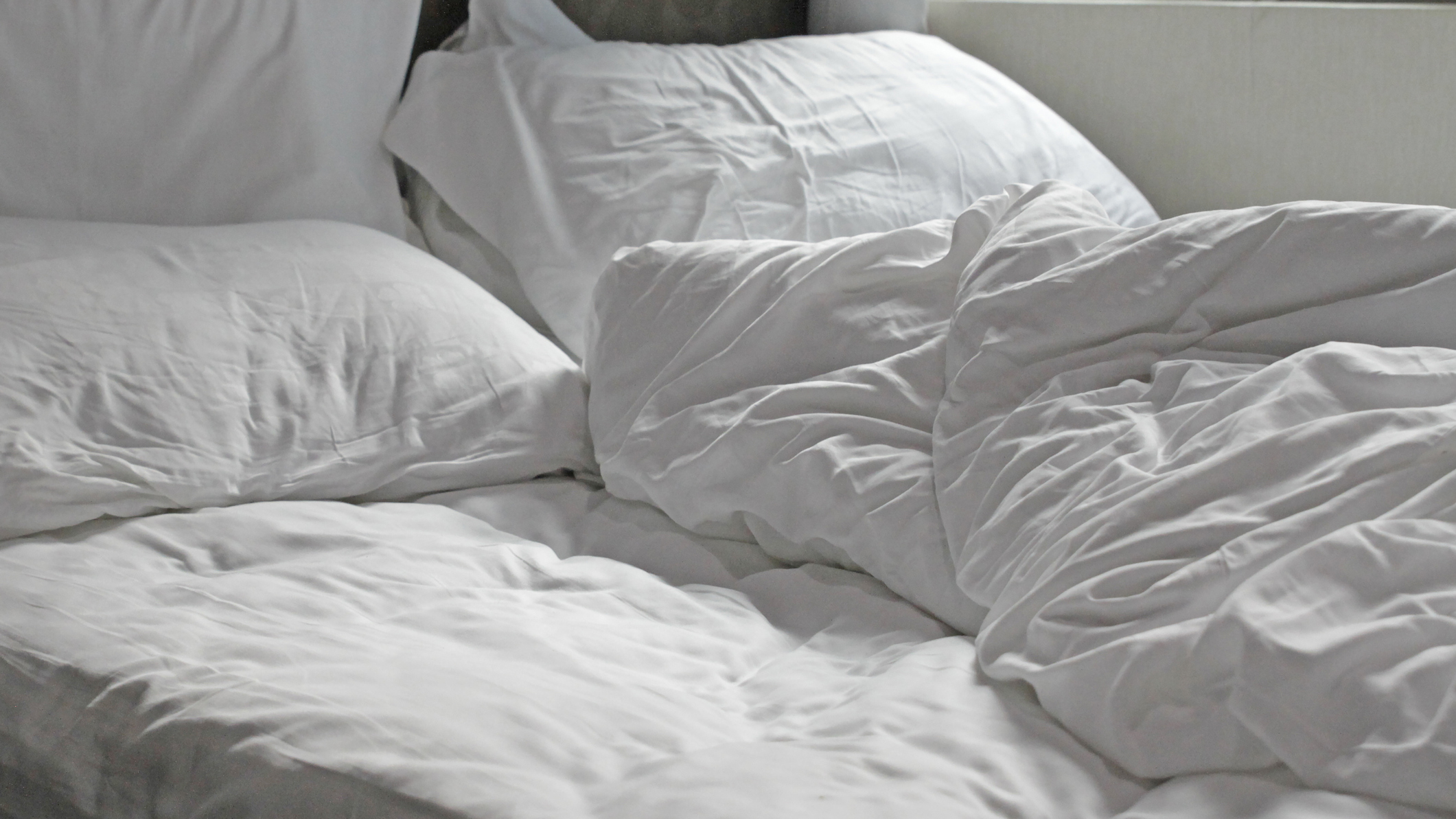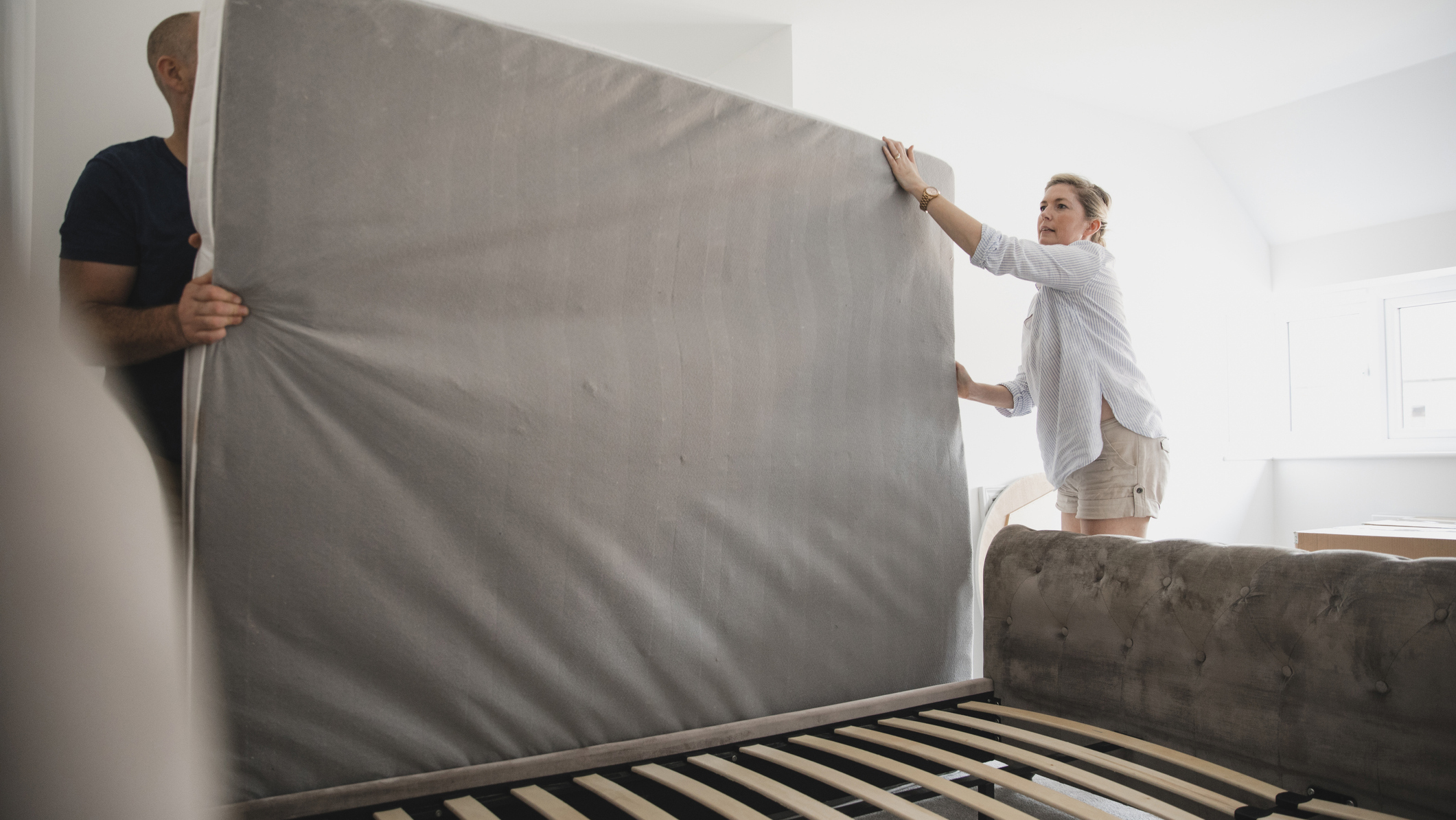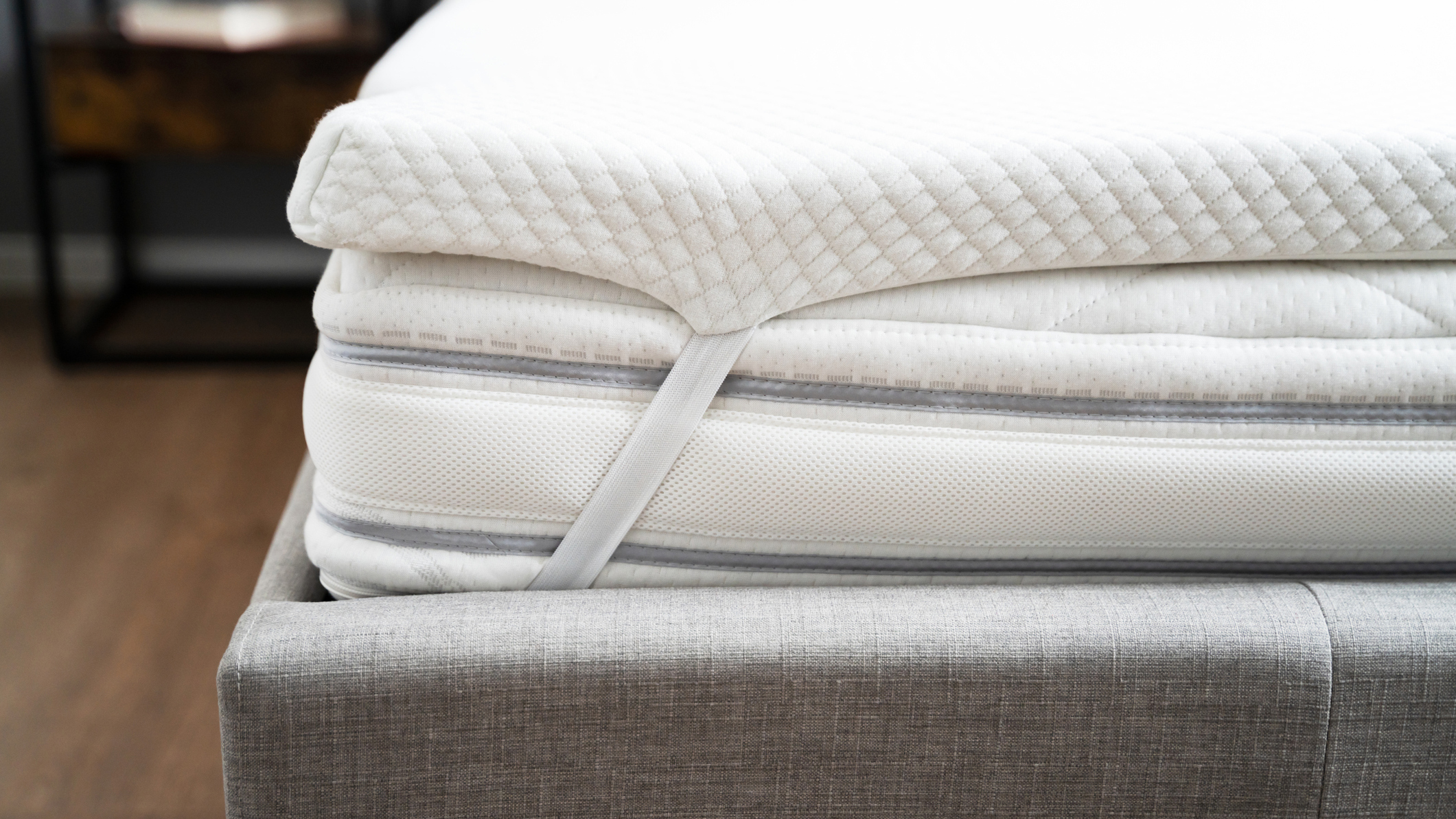You can’t fix a sagging mattress, but you can reduce the sag – here’s how
What to do if your mattress is sagging, including spotting the telltale signs that it's time to replace it

When it comes to learning how to fix a sagging mattress, there are umpteen bits of advice, all claiming to renew your bed. But the truth is, you can’t fix a sagging mattress so that it’s pretty much like new; the only real way to do that is to return it to the manufacturer for repairs.
That said, if you’re at home right now, noticing signs of sagging and dipping in your mattress, there are things you can do to minimize the sagging and buy your mattress a bit more time. After all, even the best mattress will start to show signs of natural ageing after years of use.
So here we share top tips and hacks to help you learn how to minimize sagging on a mattress. But let’s also be clear: if you’re waking up with aches and pains, or you are sleeping better away from home, then it’s time to consider a new mattress. Yes you can learn how to sleep on an uncomfortable bed and how to make a mattress firmer, but your back health will thank you if you really need the upgrade and can make it happen.
Why do mattresses sag, and is it really a problem?
Sagging is generally the result of normal wear and tear and it doesn't matter if you own a luxury bed or an affordable mattress, as when the materials in a mattress are exposed to pressure each night, sagging occurs at the points where our body places the most weight.
The original quality of the materials within your material make a big difference to lifespan, but foam (and in particular, cheap foam) will gradually soften and not bounce back after use. Springs also loose tension over time, leading to less rigid support and more sagging.

Why is this a big deal? Because a sagging mattress can play havoc with your body, causing back and neck pain and preventing you from sleeping properly. Numerous studies show that new mattresses increase sleep quality and reduce pain, so keeping your bed in tip-top condition is vital to your health.
- What builds up on a mattress that isn't cleaned regularly
- Memory foam vs hybrid mattresses: we look at the main pros and cons
How to minimize sagging in a mattress
Sadly, there’s no magical way to ‘fix’ a sagging mattress completely unless you can send it back to the manufacturer for repairs. But there are various ways to minimize the effects of sagging and prolong the life of your mattress.
Get daily insight, inspiration and deals in your inbox
Sign up for breaking news, reviews, opinion, top tech deals, and more.
The effectiveness of these methods will depend on the materials contained within your mattress, the severity of the sagging and the age of your mattress. After all, a mattress with ten years’ worth of sagging is going to be a lot harder to salvage than one of seven years.
1. Double check your mattress warranty
Some mattresses, such as Nectar and DreamCloud, come with forever warranties. This means it may be possible to send your mattress back to the manufacturer for them to fix the sagging properly.
Warranties don’t cover normal softening of foam or coils that doesn’t affect pressure relief, but if the sagging is causing structural problems with the mattress, you will either get a repair or a replacement bed.
So, before you do anything else, check the warranty of your mattress and ask the manufacturer what can be done to improve the sagging.

2. Rotate the mattress
Simply rotating your mattress can do a lot to reduce sagging and prevent future sagging. Without rotation your body weight will naturally cause the mattress to dip and sag at all the major pressure points (head, shoulders, back and hips). Rotating helps to keep the surface of your bed more even and reduces general wear and tear.
Do check that your mattress can be rotated, as some have zoned support that means your lumbar region won’t be in the right position if the bed is rotated. How often should you rotate your mattress? Every few months is best.
3. Replace the foundation
The wrong foundation or bed frame can contribute to premature sagging and older foundations wear out over time. Most modern mattress manufacturers list compatible bases and foundations on their websites, so make sure you follow any advice when choosing a base for your mattress.
Foundations that don’t have any support under the center of the bed (for example, a base with only four legs) will often cause a mattress to sag in the middle where there’s less support.
Similarly, check if the mattress manufacturer specifies the minimum allowable difference between slats on a slatted mattress. Why? Because mattresses can start to sag in between the slats if they are too widely spaced apart.

4. Use a mattress topper
Bed toppers are like mini mattresses. They are usually two to four inches thick and made from a variety of fillings, such as memory foam, cooling gel or wool.
The best mattress toppers are designed to add comfort, support your back and provide pressure relief, meaning they’re an ideal way to prop up a sagging mattress. We’d recommend a thicker memory foam mattress topper of around three to four inches to help offset sagging. Not sure whether you need a topper or a mattress pad? Our mattress pad vs mattress topper guide will spell out the differences.
The mattress topper should be placed directly on top of your mattress, but underneath the sheets, to boost sleep comfort and minimize sagging.
5. Add pillows in areas where there’s sagging
This is a very quick fix only, but if you need your mattress to last just that little bit longer until you can replace it, then adding some bed pillows will help. In this scenario, pillows act as a temporary band-aid to sagging.
You’ll need to choose pillows that retain their shape well, especially if you’re placing one around your back to offset sagging in that area. The other main areas you might want to use them include underneath your hips and legs.
Signs that it’s time to replace your mattress
As we’ve already mentioned, how long your mattress lasts for is dictated by a number of different factors. These include what the mattress is made of, your sleep position (and your partner’s), your body weight and the quality of the original materials.
That said, there are some signs that shouldn’t be ignored because they mean it’s time to replace your mattress right now. Here are the top three signs to look for:
1. You’re waking up with back, neck or hip pain – If you’re consistently waking up with pain in these areas, your mattress needs to be replaced. These are the key pressure points on your body and these need to be supported for a good night’s sleep.
2. You can feel your body dipping deeply in places when you lie down – If your body is dipping deeply into your mattress, the chances are that the materials inside have softened or lost their tension and won’t bounce back once you get up. At this point a new mattress is a necessary option.
3. You sleep better on any other mattress – Most of us will always say that we sleep best in our own beds and environment. So, if you find that you’re getting a better night’s sleep at hotels or a friend’s house, then it’s time to look for a new mattress so that you can sleep well every night.

How to fix a sagging mattress: Conclusion
We’ve covered all the tips you’ll need to help minimize sagging or how to fix your mattress with the manufacturer’s help. And using any of these methods will give you more time with your existing mattress, but no mattress will last forever.
In general, most need to be replaced every six to ten years, depending on their design, materials and build quality. For a better overview of what life span you can expect, read our feature answering how long does a mattress last.
Once a mattress has started to sag it’s only a matter of time before it will need to be replaced, as excess sagging leads to pain and restless sleep. Learning how to choose a mattress for your sleeping position can make a difference to not only your sleep comfort but also how long it lasts.
To boost your sleep comfort further, consider investing in the best pillow for your sleeping position. And to keep your entire bed fresher for longer, cover it well with a good mattress protector for safeguarding against stains and spills.
Read more:
- Our guide to this year’s best sleep trackers
- Saatva mattress sale: what to shop
- The best Nectar mattress sales and deals
- Rise and shine with the best wake up lights
Jo Plumridge is a freelance writer and photographer with over 20 years of experience writing for a variety of magazines, books and websites. She writes, perhaps unsurprisingly, about photography but also extensively on all things sleep and interior design related, alongside home and tech product reviews. She’s lived in the middle of a nature reserve in Botswana and written a guidebook to New Zealand, but now spends a lot of time trying to photograph the cats she and her husband foster for a local charity - without a doubt the most challenging subjects on earth!
- Claire DaviesSleep Editor, Certified Sleep Science Coach
